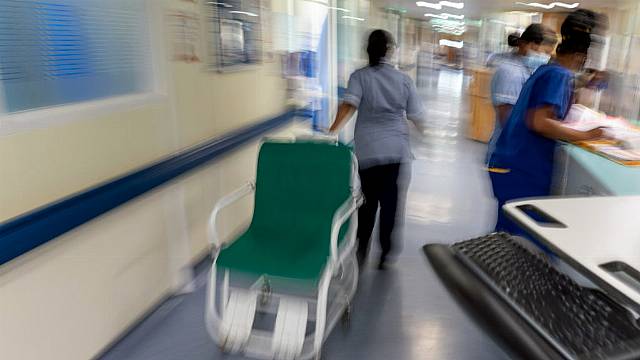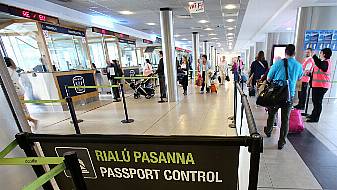Overcrowding and long waiting times have been a feature of the Irish health system for years, but are things getting better?
The breakingnews.ie HSE tracker provides a regularly updated overview of the performance of Ireland’s health service and the impact on patients.
Below you can find out how many people are waiting for beds in hospitals around the country, check how long people have to wait on average for appointments, and compare the performance of the health service to previous years.
Hospital overcrowding is an issue that successive governments have grappled with. It often piles major pressure on the HSE during winter, but now healthcare workers say it has become a year-round problem.
The HSE and the Irish Nurses & Midwives Organisation (INMO) publish separate data every day on overcrowding and the number of patients on a trolley waiting for admission to a bed.
The figures released by the two organisations often vary as they count patients differently.
The HSE records the number of patients waiting on a hospital trolley or extra bed placed in an inappropriate space in a hospital ward.
It also includes patients in beds not usually used for people admitted through the emergency department, which is known as surge capacity. These are beds taken from elsewhere in a hospital to meet the demand in the emergency department.
In addition to this, the INMO counts patients placed on corridors or chairs in all parts of the hospital while waiting for admission to a bed.
Last year the INMO recorded that 122,879 patients, including 3,494 children, were admitted to hospital without a bed.
There has been a particular focus on overcrowding in Ireland since 16-year-old Aoife Johnston died at University Hospital Limerick (UHL) in 2022 after waiting for 12 hours to be assessed for suspected sepsis.
The continued high number of patients attending the emergency department at UHL led to the cancellation of scheduled care across five hospitals and injury units in the Mid-West for an indefinite period.
Consultants said the HSE’s decision to cancel elective surgeries, endoscopies and outpatient appointments in the region was “unbelievable” and “one of the starkest developments in Irish healthcare in recent times”.
The move will certainly add further pressure to national waiting lists for treatment, which the Government has acknowledged are too long.
Between 2015 and 2021, scheduled care waiting lists increased by nearly 60 per cent.
Outpatient and inpatient waiting lists are published by the National Treatment Purchase Fund (NTPF). Unlike other datasets common across the health sector, such as trolley counts, these are not disputed by different stakeholders.
The outpatient waiting lists show the number of people waiting to be seen. These include people who have a date for their appointment or are waiting for an appointment date.
Data for inpatient, day case and endoscopy care shows only the number of people waiting on an appointment. It does not include people who have a date for their appointment.
In recent years the Government has embarked on annual “action plans” to reduce waiting lists for outpatient, inpatient and day case appointments.
The €437 million plan for 2024 has set out to reduce waiting lists by 6 per cent, or about 39,300, by the end of the year, compared with the number waiting at the start of 2024 (671,000).
However, the chief executive of the HSE, Bernard Gloster, has said the best metric to judge hospital waiting lists is the length of time patients are waiting, rather than the number of patients waiting.
Some progress has been made in recent years in bringing down the number of patients waiting more than 18 months for an outpatient appointment. The average outpatient waiting time reduced in 2023 from 9.7 months to 7.5 months.
But more than two-thirds of patients on hospital waiting lists are still waiting longer than the Sláintecare target times.
The 2017 Sláintecare report, which seeks to overhaul the health service, recommended maximum wait times of no more than 12 weeks for inpatient/day case procedures or endoscopy and 10 weeks for a new outpatient appointment.
About 68 per cent of outpatients are waiting longer than 10 weeks for an appointment and about 60 per cent of inpatients are waiting longer than 12 weeks for treatment.
The situation for children is worse still, with more than 70 per cent of child outpatients waiting more than 10 weeks for an appointment.
The health service is beset by many challenges but it remains one of the top priorities for Irish people ahead of the general election on November 29th.
The HSE was among voters’ top five priorities in the latest Ipsos Snapshot poll for The Irish Times.
With winter fast approaching, hospital trolleys and waiting lists are set to become of some the key battlegrounds during the election campaign.







